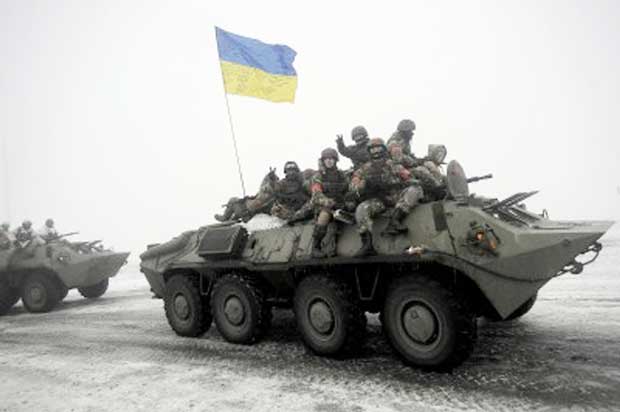
.jpg)
Economically Ukraine continues to go down the chute. No other East European has messed up its economic potential, as has Ukraine. During Soviet times Ukraine with its industrial prowess and wonderful fertile soil, making it the Soviet Union’s breadbasket, was a success (by communist standards). Now 25 years of political upheaval, economic mismanagement and greed by the oligarchs have taken a dreadful tool on living standards. The stoicism of ordinary people is to be wondered at. One reason why many easterners want to return to Russia is because they think they will have higher living standards.
In an essay in the December, 2014, issue of Foreign Affairs Andrei Shleifer, a professor of economics at Harvard and Daniel Treisman, a professor of political science at the university of California have presented an analysis of what went right in the other east European countries, and, a for a time, in Russia under President Vladimir Putin. They write: “The East European countries have transformed their militarized, over industrialized and state-dominated systems into service-orientated market economies based on private ownership and integrated into global commercial networks. No longer distorted to fit Marxist blueprints, their economic institutions, trade, and regulatory environments today look much like those of other countries at similar income levels.
"Observers often blame post-communist reforms for poor economic performance. Two common charges are that the reforms were fundamentally misconceived and that they were implemented in too radical a fashion"
These changes notwithstanding, observers often blame post-communist reforms for poor economic performance. Two common charges are that the reforms were fundamentally misconceived and that they were implemented in too radical a fashion. Such criticism raises two questions: first whether the states’ economic performance has indeed been poor, and second, whether more radical strategies resulted in worse outcomes than more gradual approaches. The short answer to both questions is no.”
.jpg)
There was well-publicized economic slump after communist rule was ended but half of it reflected cuts in fictitious output or worthless investments. And it didn’t take more than a handful of years for economic growth to buzz. For example, between 1990 and 2011 the median income in Uzbekistan expanded slightly more than the median income elsewhere in the world. Bosnia had the third-highest growth rate in the world- its national income increased by 450%. Poland, Albania, as well as Bosnia, outpaced the traditional growth engines of Hong Kong and Singapore.
The rise in consumption took off. From 1990 to 2011 household consumption per capita in the region grew on average by 88%, compared with the average increase elsewhere in the world of 56%, In Poland it was 146%, the same as South Korea’s. In Russia the increase was 100%.
Between 1993 and 2011 car ownership in Eastern Europe climbed from one for every ten people to one for every four.
Mobile phone subscriptions per head are today greater than those in Western countries. Living space- mainly larger apartments- has increased per person, expanding by 100% in the Czech Republic, 85% in Armenia and 40% in Russia. University enrolments have increased significantly.
Poverty and income equality did increase in the immediate post-communist years but today the rates are now lower than in those countries with similar income levels.
Inflation and unemployment did shoot up in the initial years of freedom but today the inflation rates are below the global median. Unemployment is still higher but it has declined since its peak in 2000.
There has been many press accounts about the lessening longevity of men in Russia. But at 70 years it is higher than it has ever been.
Infant mortality has fallen faster than any other region in the world. While it is true that the alcohol consumption rates are too high in Russia and the Baltic states they are not as high as in France, Austria, Germany and Ireland.
On the number of wars- in ex-Yugoslavia and Chechnya, Georgia and now Ukraine- the post-communist countries were no more likely to have armed conflict than similarly developed states, although the ex-Yugoslavia war must be counted as one of the bloodiest of the last 60 years.
When it comes to demilitarization the Soviet Union in Cold War years spent 25% of its GDP on armaments. The successor states are spending no more than 5%- and that includes Russia.
A note of caution about the statistics above. Some are averages and don’t show, for example, that while Poland has doubled its income Tajikistan remains war-scarred and is a very poor dictatorship.
It is true that the often aggressive reforms that put an end to Soviet-style economic management did result in falling incomes and rising unemployment. But by the mid 1990s countries that had fully embraced serious reforms were doing much better than those who were more cautious (and perhaps, we shouldn’t forget, more caring of the poor- the communists were good at providing universal health services).
Most of this grand achievement is not well known in Western Europe and North America but there it is- the honest truth.
[email protected]

.jpg)
.jpg)